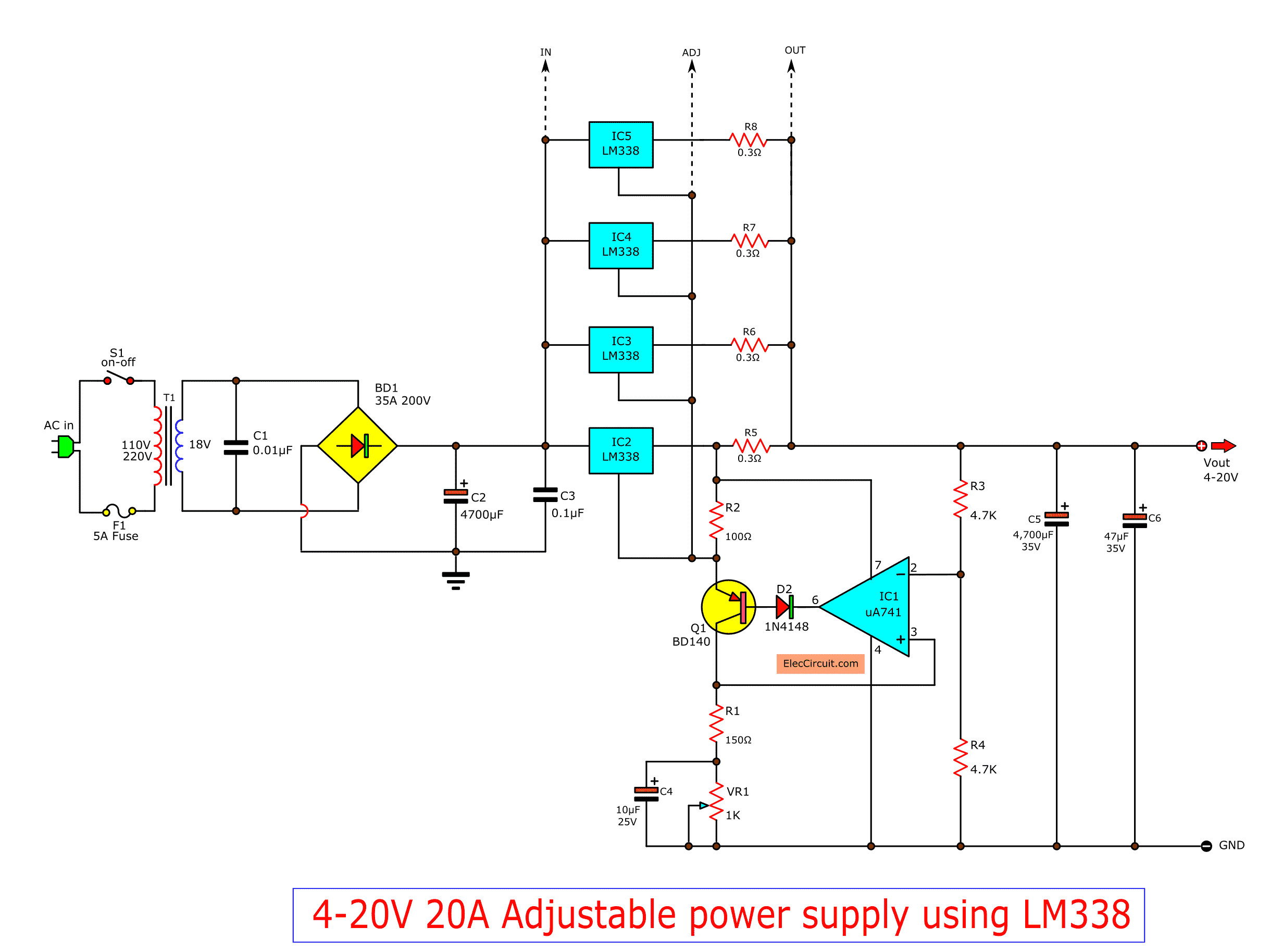Constant Current

Constant current
A constant current (steady current, time-independent current, stationary current) is a type of direct current (DC) that does not change its intensity with time.
What is constant current and constant voltage?
DC regulated power supplies are broadly classified into "DC constant voltage power supplies" whose output voltage is stable even when the load changes and "DC constant current power supplies" whose output current is stable.
How do you use constant current?
To operate the power supply in constant current (CC) mode, set the power supply to a voltage value higher than the voltage value calculated by Ohm's law from the current value to be passed through the load and the resistance value of the load, and the power supply will operate in constant current mode.
Why current is constant in DC?
Direct current (DC) is an electric current that is uni-directional, so the flow of charge is always in the same direction. As opposed to alternating current, the direction and amperage of direct currents do not change.
Is DC constant current?
Direct current is a bit easier to understand than alternating current. Rather than oscillating back and forth, DC provides a constant voltage or current.
What are the types of current?
There are two kinds of current electricity: direct current (DC) and alternating current (AC). With direct current, electrons move in one direction. Batteries produce direct current. In alternating current, electrons flow in both directions.
What is constant voltage?
Constant voltage refers to the ability to fluctuate output current to maintain a set voltage. Constant voltage can be used for applications where the workpieces do not have flat surfaces, e.g. crossed wires, and where the resistance varies significantly, and for extremely short welds (less than 1 millisecond).
What are the 3 types of power supply?
There are three subsets of regulated power supplies: linear, switched, and battery-based. Of the three basic regulated power supply designs, linear is the least complicated system, but switched and battery power have their advantages.
What is the constant power?
Constant Power Mode in Power Supplies In order to limit the output power, and therefore input power, a third operating mode is introduced: Constant Power (CP). While operating in Constant Power mode, the voltage is controlled such that the output power remains constant.
Why do we need constant current?
A constant current source is, thus, a very valuable component because it can supply steady current even if there are changes in resistance, even a wide variance in the resistance. This comes in use when a circuit needs a steady current supply, without fluctuations.
What is current source example?
For example, a 5 V voltage source in series with a 4.7 kΩ resistor will provide an approximately constant current of 1 mA ± 5% to a load resistance in the range of 50 to 450 Ω. A Van de Graaff generator is an example of such a high voltage current source.
What is a constant current regulator?
The adjustable constant current regulator (CCR) is a simple, economical and robust device designed to provide a cost effective solution for regulating current in LEDs. The CCR is based on Self-Biased Transistor (SBT) technology and regulates current over a wide voltage range.
Is AC current constant?
An alternating current does not have a constant value. Its value is always changing. This means the amount of charge flowing past a point in the circuit changes over time. More specifically, alternating current periodically reverses direction.
What DC means?
DC (direct current) is the unidirectional flow or movement of electric charge carriers (which are usually electrons). The intensity of the current can vary with time, but the general direction of movement stays the same at all times.
Who uses DC current?
DC power is widely used in low voltage applications such as charging batteries, automotive applications, aircraft applications and other low voltage, low current applications. All solar panels nowadays produce DC power.
Is battery DC or AC?
Batteries and electronic devices like TVs, computers and DVD players use DC electricity - once an AC current enters a device, it's converted to DC. A typical battery supplies around 1.5 volts of DC.
What is difference AC and DC?
Electric current flows in two ways as an alternating current (AC) or direct current (DC). The main difference between AC and DC lies in the direction in which the electrons flow. In DC, the electrons flow steadily in a single direction, while electrons keep switching directions, going forward and then backwards in AC.
Why is AC used over DC?
The Difference Between AC & DC The main factor that went into the choice of AC over DC was that AC is more efficient. Its ability to travel back and forth made gave it the ability to travel over longer distances. Thus making it able to power more homes.
What is current unit?
The SI unit of current is ampere which measures the flow of electric charge across a surface at the rate of one coulomb per second. Since the charge is measured in coulombs and time in seconds, so the unit is coulomb/Sec (C/s) or amp. Meanwhile, the formula for electric current is given as follows: I = V/R.
Where is Ohm's law applicable?
Ohm's law is one of the basic equations used in the analysis of electrical circuits. It applies to both metal conductors and circuit components (resistors) specifically made for this behaviour. Both are ubiquitous in electrical engineering.










Post a Comment for "Constant Current"